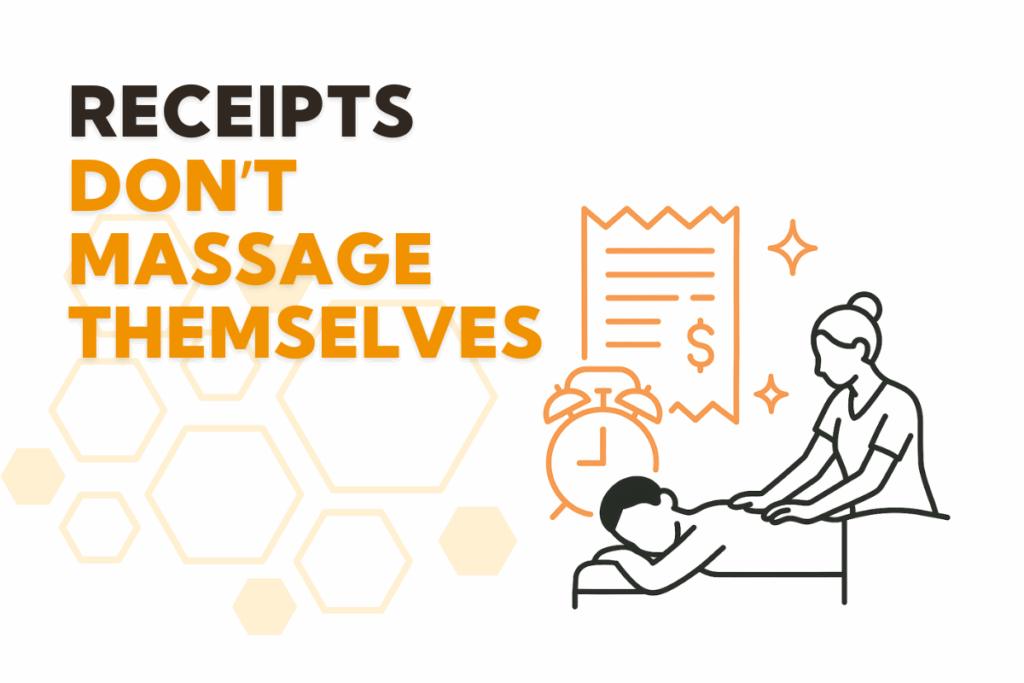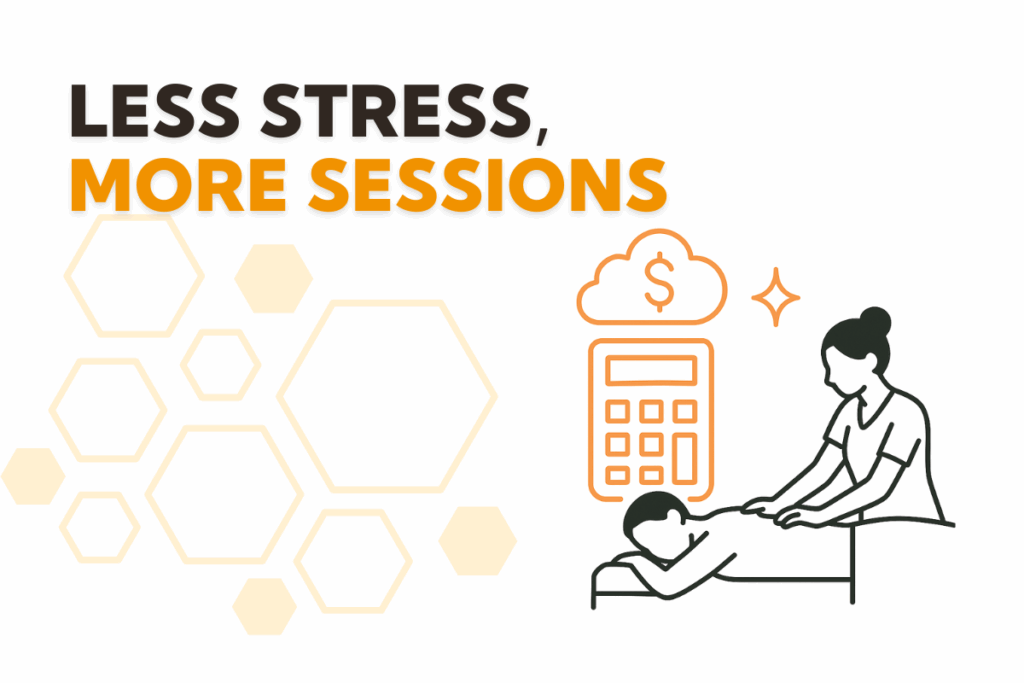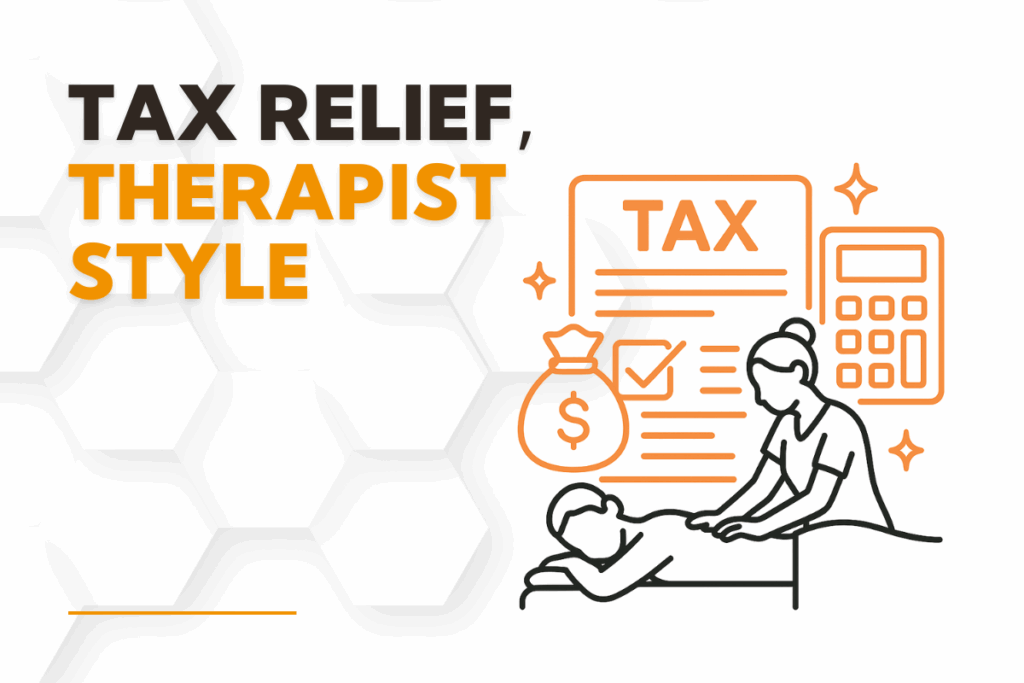Make tax time less painful with strategies that actually fit your day-to-day clinic life.
Managing tax filings and deductions is one of the most stressful parts of running a massage therapy business. Many therapists feel overwhelmed trying to balance client care with logging expenses, tracking income, and making sure they don’t miss important write-offs. If that sounds familiar, you’re not alone. Whether you’re a solo practitioner or running a multi-room clinic, getting a handle on taxes doesn’t have to be confusing or exhausting.
Keep It Simple: Why Record-Keeping Is Your Superpower
Consistency now means confidence later
Staying on top of your books makes managing tax filings and deductions a whole lot easier. Waiting until April to deal with it all? That’s when things get messy. Logging expenses and income weekly is a small habit that pays off big.
Real-world example
Alana, an RMT in Sherwood Park, uses a color-coded spreadsheet to track rent, tips, and supply costs each week. At tax time, she’s not scrambling. Her accountant gets everything they need in one file.
What works best for massage therapy clinics
- Set up a dedicated business bank account
- Use a spreadsheet, app, or basic software to track expenses
- Save all receipts in a monthly folder (cloud-based or hard copy)
- Review your numbers regularly using real-time massage clinic reporting and analytics tools
Even if you’re more analog than digital, having one place where everything lives will keep your records organized and stress levels low.

Deduct With Confidence: What You Can (and Can’t) Claim
Understand what the CRA really allows
One of the biggest frustrations around managing tax filings and deductions is knowing what qualifies. The rule of thumb is anything “ordinary and necessary” for running your clinic can be deducted — but some gray areas can trip you up.
Common write-offs massage therapists can claim
- Treatment-related items: oils, sheets, PPE, and sanitizers
- Professional costs: licensing fees, CEU courses, association dues
- Business tools: scheduling apps, invoicing software, mobile payment systems
- Office expenses: rent, utilities, insurance, laundry service
- Marketing expenses: printed brochures, website domain, social ads
- Vehicle use: mileage to mobile sessions, supply pickups, continuing ed
If you’re using online intake forms and digital SOAP notes, those subscriptions count, too. Learn how online charting for massage therapy fits into your expense tracking.
What to avoid deducting
- Clothing (unless branded and work-specific)
- Personal meals
- Non-business travel or entertainment
Keep receipts, use a consistent method, and ask for clarification when unsure. You’re allowed to claim what you genuinely spend on running your practice.
Choosing the Right Business Structure to Simplify Tax Season
Why structure matters for taxes
Your business structure plays a major role in how you manage tax filings and deductions. Many therapists default to sole proprietorship, but that’s not always the best fit — especially as your income or clinic grows.
Options for massage therapy businesses
Sole Proprietor
Simple and low cost. Taxes are included in your personal return. Ideal when starting out.
Corporation
More paperwork, but tax advantages and liability protection increase as income grows.
Multi-owner or partnership setups
Shared responsibilities, shared revenue. Important to clarify who handles what for tax reporting.
Pro tip
If you operate in different locations or have several contractors working with you, explore multi-location support for massage clinics to streamline your tracking and reporting across sites.
Avoiding Tax Surprises: Planning Ahead Makes All the Difference
Be proactive, not reactive
Therapists who actively plan throughout the year make managing tax filings and deductions a lot less stressful. One major way to do that is through quarterly payments.
How to stay ahead
- Save 25–30% of every payment you receive into a separate tax account
- Pay estimated taxes quarterly if your income exceeds the CRA threshold
- Set up recurring reminders on your calendar
- Meet with a tax pro at least once per year to ensure you’re on track
Build long-term financial stability
Consider contributing to an RRSP or TFSA to reduce taxable income while preparing for retirement. Every little step helps lower your year-end stress.

Learn from Other Therapists: What’s Actually Working
“I treat taxes like rent — it’s non-negotiable”
Marcel, a clinic owner in Edmonton, uses two accounts. One for business expenses, one just for taxes. He transfers 30% of every deposit the same day it arrives. “Out of sight, out of mind — and no surprise bills.”
“I have a 15-minute finance ritual every Friday”
Janelle logs her weekly income, categorizes expenses, and checks her mileage. She says it’s easier to spend 15 minutes now than 15 hours later.
Your 8-Week Tax Prep Plan for Peace of Mind
Week-by-week approach
- Weeks 1–2
- Review last year’s expenses
- Create a folder for receipts, invoices, and logins
- Set up a separate card for business use
- Weeks 3–4
- Choose a system for tracking
- Add tax-related reminders to your calendar
- Review your workflow for automated tools for massage clinics
- Weeks 5–6
- Categorize your expenses
- Download bank and card statements
- Review your write-offs and estimate quarterly payments
- Weeks 7–8
- Book a check-in with your accountant
- Prep your documents for filing
- Reflect on what worked and what to improve next year
You’re Not Alone in Figuring This Out
Managing tax filings and deductions isn’t something most therapists feel confident about — and that’s okay. Like massage, it’s a skill that gets easier with guidance and repetition. Small changes in how you track and plan can mean big relief when tax time rolls around.
You don’t have to tackle it all at once. And you definitely don’t have to tackle it alone. Inside Hivecommunity, we’re sharing strategies that work, from therapists who’ve figured it out the hard way — so you don’t have to.
FAQs
Ideally, once a week. It keeps things manageable and ensures you won’t forget what each purchase was for.
Yes, as long as it’s used for washing linens used in your treatments. Just be sure to keep receipts.
It helps you avoid late payment penalties and spreads your tax burden throughout the year, which makes it easier to manage cash flow.
Look for an accountant who offers small business or self-employed packages. Many are willing to do one-time consultations or reviews if full services aren’t in your budget.


